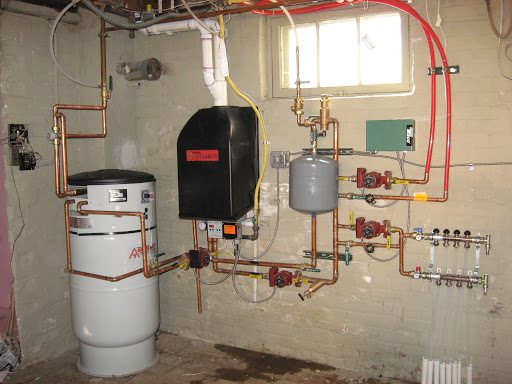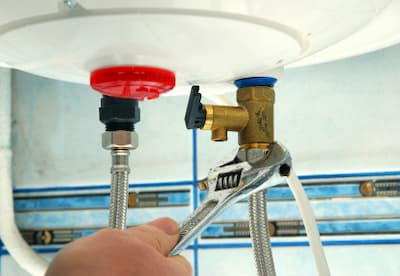Straightforward Ways to Maintain Your Home's Hot Water System EffectivelyWays to Properly Care for Your Home's Hot Water SystemMaintaining Your Home's Hot Water System: Key Tips
Click HereEveryone seems to have their own unique opinion when it comes to How to Maintain Your Water Heater & Prolong its Life.

Hot water is essential for daily comfort, whether it's for a revitalizing shower or cleaning dishes. To ensure your warm water system runs effectively and lasts longer, regular maintenance is crucial. This write-up gives functional ideas and understandings on just how to keep your home's warm water system to prevent interruptions and costly fixings.
Intro
Keeping your home's hot water system could seem overwhelming, however with a couple of easy actions, you can guarantee it operates smoothly for several years to find. This overview covers everything from comprehending your warm water system to DIY upkeep tips and understanding when to hire expert help.
Relevance of Keeping Your Hot Water System
Normal upkeep not only expands the life expectancy of your warm water system yet also guarantees it operates effectively. Ignoring maintenance can result in reduced effectiveness, higher energy costs, and even premature failing of the system.
Indicators Your Warm Water System Needs Upkeep
Knowing when your warm water system requires attention can protect against major issues. Watch out for signs such as irregular water temperature level, weird sounds from the heater, or corroded water.
Understanding Your Hot Water System
Before diving into maintenance tasks, it's useful to comprehend the basic components of your warm water system. Generally, this includes the water heater itself, pipes, anode rods, and temperature level controls.
Monthly Upkeep Tasks
Normal monthly checks can help catch small issues before they rise.
Purging the Hot Water Heater
Purging your water heater gets rid of debris accumulation, boosting performance and extending its life.
Checking and Changing Anode Rods
Anode poles prevent rust inside the storage tank. Examining and changing them when worn out is crucial.
Inspecting and Changing Temperature Settings
Adjusting the temperature settings guarantees optimum performance and safety.
Do It Yourself Tips for Maintenance
You can perform a number of maintenance jobs on your own to keep your hot water system in top condition.
Looking for Leaks
Frequently check pipelines and links for leaks, as these can bring about water damage and greater costs.
Testing Stress Relief Valves
Evaluating the pressure safety valve guarantees it works correctly and protects against excessive pressure accumulation.
Insulating Pipelines
Protecting warm water pipelines reduces heat loss and can save energy.
When to Call a Specialist
While DIY maintenance is helpful, some problems require professional proficiency.
Complex Issues Requiring Specialist Aid
Examples consist of major leaks, electric problems, or if your hot water heater is regularly underperforming.
Regular Expert Upkeep Perks
Professional maintenance can consist of thorough examinations, tune-ups, and making certain compliance with security criteria.
Final thought
Regular maintenance of your home's hot water system is crucial for effectiveness, durability, and cost savings. By complying with these tips and knowing when to look for professional assistance, you can make certain a dependable supply of warm water without unanticipated interruptions.
Water Heater Maintenance: The Basics
Maintaining your water heater will ensure it operates efficiently and has a longer lifespan. Neglecting regular maintenance can lead to costly repairs and an even bigger chunk of your savings if you have to replace it sooner than necessary. But there’s good news: Most water heater maintenance tasks are relatively simple and easy for homeowners with basic DIY skills.
Flush the Water Heater
Over time, sediment and minerals can build up in the tank, reducing its efficiency and potentially causing damage. To flush the tank, turn off the power or gas supply, attach a hose to the drain valve near the bottom and open the valve to drain the water until it runs clear. Ideally, flush the tank annually.
Replace the Anode Rod
The anode rod is a sacrificial metal rod that helps prevent corrosion inside the tank. Inspect and replace it every three to five years or per the manufacturer's recommendation. To replace the anode rod, turn off the power or gas supply, drain a few gallons of water from the tank, unscrew the old rod and replace it with a new one. If the anode rod is significantly corroded or covered in calcium buildup, it's a sign the water heater may need to be replaced soon.
Tune-Up
A yearly tune-up can help identify potential issues and ensure your water heater operates at peak efficiency. This typically involves checking the thermostat, burner assembly (for gas heaters) and any other components specified by the manufacturer. During a tune-up, the technician may also clean the burner and adjust the pilot light (for gas heaters) or examine the heating elements (for electric heaters).
How to Maintain Your Water Heater
Insulate the tank. Insulating the tank can improve energy efficiency and reduce heat loss, saving you money on energy bills. You can purchase precut insulation blankets designed specifically for water heaters or use standard fiberglass insulation wrapped securely around the tank. Check the temperature. The recommended water temperature for most households is around 120 degrees Fahrenheit (49 degrees Celsius). Higher temperatures can increase energy costs and potentially cause scalding. Use a kitchen thermometer to check the temperature at the faucet nearest the water heater. Monitor water pressure. Excessive water pressure can strain the water heater and cause leaks or even tank failure. Install a pressure-reducing valve if necessary. The ideal water pressure range is between 60 and 70 PSI (pounds per square inch). Test the temperature and pressure (T&P) relief valve. The T&P relief valve is a safety feature that releases pressure if the tank gets too hot or the pressure builds up too high. Test it annually by lifting the lever and allowing a small amount of water to release. Replace the valve if it doesn't release water or reseal properly. Check for leaks. Regularly inspect the tank, pipes and fittings for leaks or corrosion. Deal with issues promptly to prevent further damage. Even a small leak can lead to significant water damage over time. Consider a tankless water heater. If your traditional tank-style water heater is nearing the end of its lifespan ( typically 10 years), consider replacing it with a tankless water heater. These units heat water on demand, reducing standby energy losses and potentially saving you money on your energy bills. Schedule professional maintenance. While homeowners can perform many water heater maintenance tasks, it's still a good idea to schedule professional maintenance every few years. A plumber or HVAC technician can thoroughly inspect the unit, identify potential issues and ensure it operates safely and efficiently. https://www.homeserve.com/en-us/blog/home-improvement/hot-water-heater-maintanence/

We had been introduced to that report about How to Maintain a Hot Water Heater in a Few Simple Steps through a friend on our other domain. Enjoyed reading our blog posting? Please share it. Let another person discover it. Many thanks for your time spent reading it.
Click Here